Aurivillius jolyanorum
Aurivillius jolyanorum
Bouyer, 1999
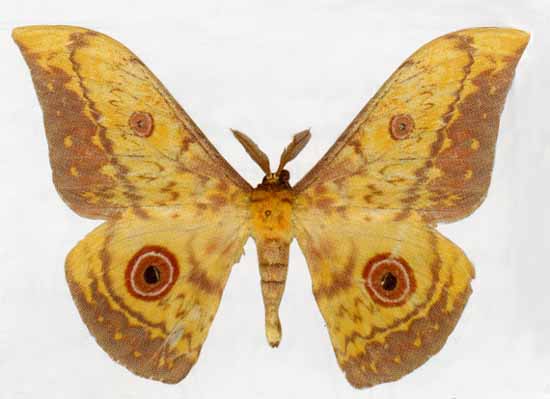
Aurivillius jolyanorum male, courtesy of Thierry Bouyer.

Aurivillius jolyanorum male, Attogon, Niaouli Forest, Benin,
June 9, 2016, courtesy/copyright Alain Coache, tentative id by Bill Oehlke.
This site has been created by
Bill Oehlke at oehlkew@islandtelcom.com
Comments, suggestions and/or additional information are welcomed by Bill.
| TAXONOMY:
Superfamily: Bombycoidea, Latreille, 1802
Family: Saturniidae, Boisduval, [1837] 1834
Subfamily: Saturniinae, Boisduval, [1837] 1834
Tribe: Bunaeini, Packard, 1902
Genus: Aurivillius, Packard, 1902
|
MIDI MUSIC
Wind Beneath My Wings
copyright C. Odenkirk
MIDI CITY
ON.OFF
<bgsound src="wings.mid" LOOP=FOREVER>
|
DISTRIBUTION:
The Aurivillius jolyanorum moth flies
in Ivory Coast, Togo, Ghana (AM), and northern portions of
Cameroon in
Africa. It probably also flies in Benin and Nigeria.
Rodolphe Rougerie reports it in Burkina Faso.
This species is very similar to aratus but lacks the grey black
scaling widely dispersed on the ventral surface of all wings in
aratus.
This species is named for collectors Eric and
Claude Joly.
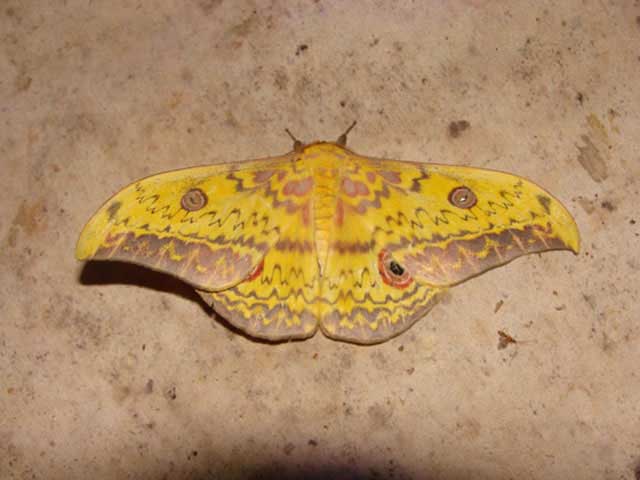
Aurivillius jolyanorum male, Togo.
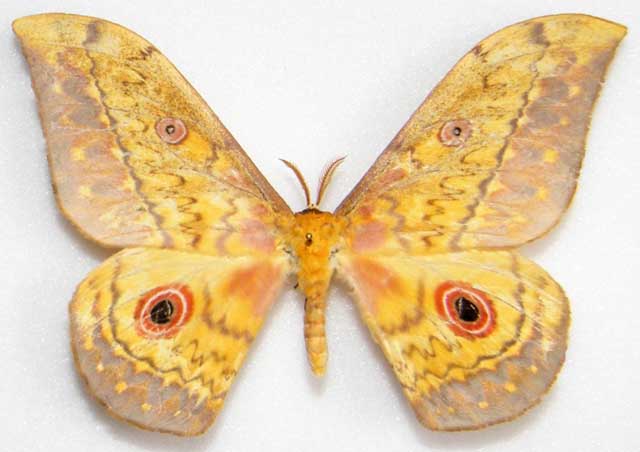
Aurivillius jolyanorum male, Ghana,
courtesy of Jason Wright, via Alan Marson,
tentative id by Bill Oehlke.
Rodolphe Rougerie writes, "There are some differences in wing pattern/shape/colouration between xerophilus/jolyanorum, but
the most useful feature when you have both species at hand is the size of the antennae, the ones of jolyanorum are much bigger."
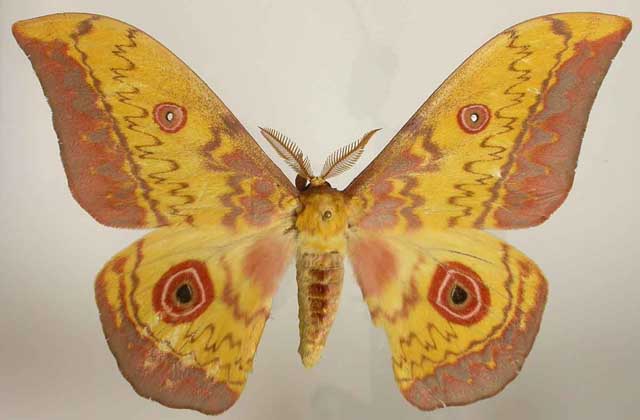
Aurivillius jolyanorum male, Burkina Faso, courtesy of Rodolphe Rougerie
FLIGHT TIMES AND PREFERRED FOOD PLANTS:
Aurivillius
jolyanorum moths fly in April, May, June, August and October, suggesting at least two broods annually.
Larvae probably feed on Silk tree (Albizia).
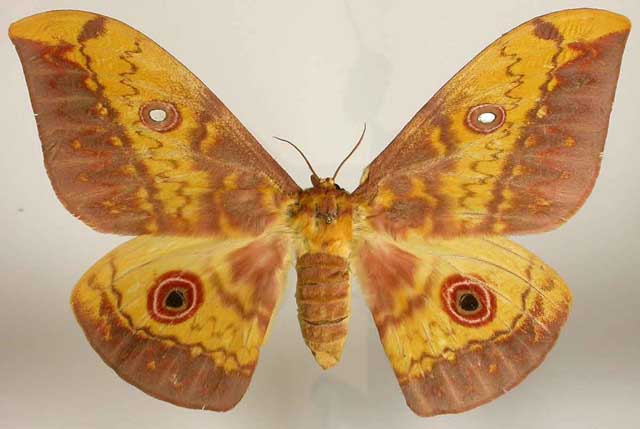
Aurivillius jolyanorum female, Burkina Faso, courtesy of Rodolphe Rougerie
ECLOSION, SCENTING AND MATING:
Females scent and attract males at night by releasing an airbourne pheromone.
Males fly in a zigzag pattern into the wind to pick up the pheromone plume with their antennae.
Both sexes come to lights with males most common around midnight.
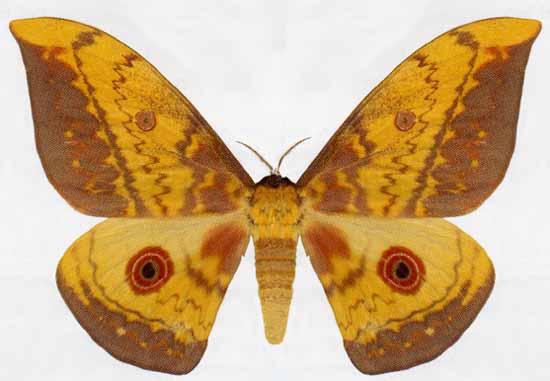
Aurivillius jolyanorum female, courtesy of Thierry Bouyer.
EGGS, LARVAE AND PUPAE:
Eggs are a translucent yellow and are deposited in groups of 6-10 on foodplant leaves.
Mature larvae descend tree trunks to pupate in subterranean chambers.
Larval Food Plants
Listed below are primary food plant and possible alternate food plants. The list is not exhaustive. Experimenting with closely
related foodplants is worthwhile.
Return to Aurivillius Genus
Return to Main Saturniidae Index






